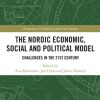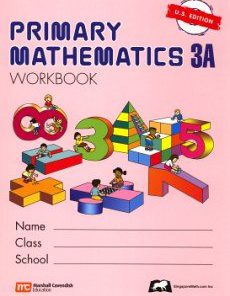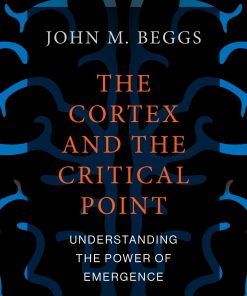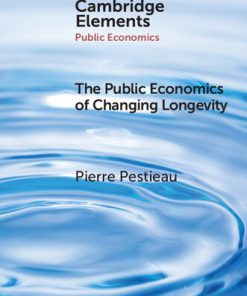Economics Private and Public Choice 17th Edition by James D Gwartney, Richard L Stroup, Russell S Sobel, David A Macpherson ISBN 9780357133996 0357133994
$50.00 Original price was: $50.00.$25.00Current price is: $25.00.
Economics Private and Public Choice 17th Edition by James D Gwartney, Richard L Stroup, Russell S Sobel, David A Macpherson – Ebook PDF Instant Download/Delivery: 9780357133996 ,0357133994
Full download Economics Private and Public Choice 17th Edition after payment

Product details:
ISBN 10: 0357133994
ISBN 13: 9780357133996
Author: James D Gwartney, Richard L Stroup, Russell S Sobel, David A Macpherson
Economics Private and Public Choice 17th Edition Table of contents:
Part 1. The Economic Way of Thinking
Chapter 1. The Economic Approach
1-1. What Is Economics About?
1-1a. Scarcity and Poverty Are Not the Same
1-1b. Scarcity Necessitates Rationing
1-1c. The Method of Rationing Influences the Nature of Competition
1-2. The Economic Way of Thinking
1-2a. Eight Guideposts to Economic Thinking
1-3. Positive and Normative Economics
1-4. Pitfalls to Avoid in Economic Thinking
1-4a. Violation of the Ceteris Paribus Condition Can Lead One to Draw the Wrong Conclusion
1-4b. Good Intentions Do Not Guarantee Desirable Outcomes
1-4c. Association Is Not Causation
1-4d. The Fallacy of Composition: What’s True for One Might Not Be True for All
Key Points
Critical Analysis Questions
Chapter 2. Some Tools of the Economist
2-1. What Shall We Give Up?
2-1a. Opportunity Cost
2-1b. Opportunity Cost and the Real World
2-2. Trade Creates Value
2-2a. Transaction Costs—A Barrier to Trade
2-2b. The Middleman as a Cost Reducer
2-3. The Importance of Property Rights
2-3a. Private Ownership and Markets
2-4. Production Possibilities Curve
2-4a. Shifting the Production Possibilities Curve Outward
2-4b. Production Possibilities and Economic Growth
2-5. Trade, Output, and Living Standards
2-5a. Gains from Specialization and Division of Labor
2-5b. Gains from Mass Production Methods
2-5c. Gains from Innovation
2-6. Human Ingenuity, Entrepreneurship, and the Creation of Wealth
2-7. Economic Organization
2-7a. Market Organization
2-7b. Political Organization
Key Points
Critical Analysis Questions
Addendum. Comparative Advantage, Specialization, and Gains from Trade
Part 2. Markets and Government
Chapter 3. Demand, Supply, and the Market Process
3-1. Consumer Choice and the Law of Demand
3-1a. The Market Demand Schedule
3-1b. Consumer Surplus
3-1c. Responsiveness of Quantity Demanded to Price Changes: Elastic and Inelastic Demand Curves
3-2. Changes in Demand versus Changes in Quantity Demanded
3-3. Producer Choice and The Law of Supply
3-3a. The Role of Profits and Losses
3-3b. Market Supply Schedule
3-3c. Producer Surplus
3-3d. Responsiveness of Quantity Supplied to Price Changes: Elastic and Inelastic Supply Curves
3-4. Changes in Supply versus Changes in Quantity Supplied
3-5. How Market Prices are Determined: Demand and Supply Interact
3-5a. Market Equilibrium
3-5b. Efficiency and Market Equilibrium
3-6. How Markets Respond to Changes in Demand and Supply
3-7. Entrepreneurship, Profit, and the Dynamics of Market Competition
3-8. Invisible Hand Principle
3-8a. Prices and Market Order
3-8b. Competition and Property Rights
Key Points
Critical Analysis Questions
Chapter 4. Demand and Supply: Applications and Extensions
4-1. The Link Between Resource and Product Markets
4-2. The Economics of Price Controls
4-2a. The Impact of Price Ceilings
4-2b. Rent Control: A Closer Look at a Price Ceiling
4-2c. The Impact of Price Floors
4-2d. Minimum Wage: A Closer Look at a Price Floor
4-3. Black Markets and the Importance of the Legal Structure
4-4. The Impact of a Tax
4-4a. The Deadweight Loss Caused by Taxes
4-4b. Actual versus Statutory Incidence
4-4c. Elasticity and the Incidence of a Tax
4-4d. Elasticity and the Deadweight Loss
4-5. Tax Rates, Tax Revenues, and the Laffer Curve
4-6. The Impact of a Subsidy
4-6a. Elasticity and the Benefit of Government Subsidy Programs
4-6b. Real-World Subsidy Programs
Key Points
Critical Analysis Questions
Chapter 5. Difficult Cases for the Market, and the Role of Government
5-1. A Closer Look at Economic Efficiency
5-1a. If It’s Worth Doing, It’s Worth Doing Imperfectly
5-2. Thinking about the Economic Role of Government
5-2a. Protective Function of Government
5-2b. Productive Function of Government
5-3. Potential Shortcomings of the Market
5-3a. Lack of Competition
5-3b. Externalities—A Failure to Account for All Costs and Benefits
5-3c. External Costs
5-3d. What Should Be Done About External Costs?
5-3e. External Benefits
5-3f. Expanding the Scope of a Project and Capturing External Benefits
5-3g. Public Goods and Why They Pose a Problem for the Market
5-3h. Potential Information Problems
5-3i. Information as a Profit Opportunity
5-4. Market and Government Failure
Key Points
Critical Analysis Questions
Chapter 6. The Economics of Political Action
6-1. The Size and Growth of the U.S. Government
6-2. Similarities and Differences Between Political and Market Allocation
6-3. Political Decision-Making: An Overview
6-3a. Incentives Confronted by the Voter
6-3b. Incentives Confronted by the Politician
6-3c. Incentives Confronted by the Government Bureaucrat
6-4. When the Political Process Works Well
6-5. When the Political Process Works Poorly
6-5a. Special-Interest Effect
6-5b. Shortsightedness Effect
6-5c. Rent-Seeking
6-5d. Inefficiency of Government Operations
6-6. Political Favoritism, Crony Capitalism, and Government Failure
6-7. The Economic Way of Thinking About Markets and Government
Key Points
Critical Analysis Questions
Part 3. Core Macroeconomics
Chapter 7. Taking the Nation’s Economic Pulse
7-1. GDP—A Measure of Output
7-1a. What Counts Toward GDP?
7-1b. Dollars Are the Common Denominator for GDP
7-2. GDP as a Measure of Both Output and Income
7-2a. Deriving GDP by the Expenditure Approach
7-2b. Deriving GDP by the Resource Cost–Income Approach
7-2c. The Relative Size of GDP Components
7-2d. The Covid-19 Pandemic and GDP
7-3. Adjusting for Price Changes and Deriving Real GDP
7-3a. Key Price Indexes: The Consumer Price Index and the GDP Deflator
7-3b. Using the GDP Deflator to Derive Real GDP
7-4. Problems with GDP as a Measuring ROD
7-4a. Nonmarket Production
7-4b. Underground Economy
7-4c. Leisure and Human Costs
7-4d. Quality Variation and the Introduction of New Goods
7-4e. Harmful Side Effects and Economic “Bads”
7-4f. GDP Understates Well-Being in the Information Age
7-5. Differences in GDP Over Time
7-6. The Great Contribution of GDP
Key Points
Critical Analysis Questions
Addendum. The Construction of a Price Index
Chapter 8. Economic Fluctuations, Unemployment, and Inflation
8-1. Swings in the Economic Pendulum
8-1a. A Hypothetical Business Cycle
8-2. Economic Fluctuations and the Labor Market
8-2a. The Labor Force Participation and Unemployment Rates
8-2b. Employment Fluctuations and Trends: The Historical Record
8-2c. Dynamic Change and Reasons for Unemployment
8-3. Three Types of Unemployment
8-3a. Frictional Unemployment
8-3b. Structural Unemployment
8-3c. Cyclical Unemployment
8-4. Full Employment and the Natural Rate of Unemployment
8-5. Actual and Potential GDP
8-6. The Effects of Inflation
8-6a. Unanticipated and Anticipated Inflation
8-6b. Why Does Inflation Adversely Affect the Economy?
8-6c. What Causes Inflation?
Key Points
Critical Analysis Questions
Chapter 9. An Introduction to Basic Macroeconomic Markets
9-1. Understanding Macroeconomics: Our Game Plan
9-2. Four Key Markets: Resources, Goods and Services, Loanable Funds, and Foreign Exchange
9-3. Aggregate Demand for Goods and Services
9-3a. Why Does the Aggregate Demand Curve Slope Downward?
9-3b. The Downward-Sloping Aggregate Demand Curve: A Summary
9-4. Aggregate Supply of Goods and Services
9-4a. Aggregate Supply in the Short Run
9-4b. Aggregate Supply in the Long Run
9-5. Equilibrium in the Goods and Services Market
9-5a. Equilibrium in the Short Run
9-5b. Equilibrium in the Long Run
9-5c. Long-Run Equilibrium, Potential Output, and Full Employment
9-5d. What Happens When the Economy’s Output Differs from Its Long-Run Potential?
9-6. Resource Market
9-7. Loanable Funds Market
9-7a. Does Inflation Help Borrowers?
9-7b. Loanable Funds Market, Interest Rates, and Bond Prices
9-7c. Global Loanable Funds Market
9-8. Foreign Exchange Market
9-9. Long-Run Equilibrium
Key Points
Critical Analysis Questions
Chapter 10. Dynamic Change, Economic Fluctuations, and the AD–AS Model
10-1. Anticipated and Unanticipated Changes
10-2. Factors That Shift Aggregate Demand
10-3. Shifts in Aggregate Supply
10-3a. Changes in Long-Run Aggregate Supply
10-3b. Changes in Short-Run Aggregate Supply
10-4. Steady Economic Growth and Anticipated Changes in Long-Run Aggregate Supply
10-5. Unanticipated Changes and Market Adjustments
10-5a. Unanticipated Increases in Aggregate Demand
10-5b. Unanticipated Reductions in Aggregate Demand
10-5c. Unanticipated Increases in Short-Run Aggregate Supply
10-5d. Unanticipated Reductions in Short-Run Aggregate Supply
10-6. The Price Level, Inflation, and the AD–AS Model
10-7. Unanticipated Changes, Recessions, and Booms
10-7a. Expansions and Recessions: The Historical Record
10-7b. Using the AD–AS Model to Think About the Business Cycle and the Great Recession of 2008–2009
Key Points
Critical Analysis Questions
Chapter 11. Fiscal Policy: The Keynesian View and the Historical Development of Macroeconomics
11-1. The Great Depression, Economic Instability, and the Development of Keynesian Economics
11-1a. The Great Depression and Keynesian Economics
11-1b. Output, Employment, and Keynesian Equilibrium
11-1c. The Multiplier and Economic Instability
11-1d. Adding Realism to the Multiplier
11-1e. Keynes and Economic Instability: A Summary
11-2. The Federal Budget and Fiscal Policy
11-3. Fiscal Policy and the Good News of Keynesian Economics
11-3a. Using the Budget to Promote Stability
11-3b. Fiscal Policy Changes and Problems of Timing
11-3c. Automatic Stabilizers
11-4. Saving, Spending, Debt, and the Impact of Fiscal Policy
Key Points
Critical Analysis Questions
Chapter 12. Fiscal Policy, Incentives, and Secondary Effects
12-1. Fiscal Policy, Borrowing, and the Crowding-Out Effect
12-1a. Do Global Financial Markets Minimize the Crowding-Out Effect?
12-2. Fiscal Policy, Future Taxes, and the New Classical Model
12-2a. Is Job Creation a Good Reason to Support a Government Spending Program?
12-3. Political Incentives and the Effective Use of Discretionary Fiscal Policy
12-4. Is Discretionary Fiscal Policy an Effective Stabilization Tool?
12-5. The Supply-Side Effects of Fiscal Policy
12-5a. Why Do High Tax Rates Decrease Output?
12-5b. How Important Are the Supply-Side Effects?
12-6. Fiscal Policy and Recovery from Recessions
12-6a. Will Fiscal Stimulus Speed Recovery?
12-6b. Tax Cuts versus Spending Increases
12-7. U.S. Fiscal Policy: 1990–2019
Key Points
Critical Analysis Questions
Chapter 13. Money and the Banking System
13-1. What Is Money?
13-1a. Money as a Medium of Exchange
13-1b. Money as a Store of Value
13-1c. Money as a Unit of Account
13-2. How the Supply of Money Affects Its Value
13-3. How Is the Money Supply Measured?
13-3a. The M1 Money Supply
13-3b. The Broader M2 Money Supply
13-3c. Credit Cards Versus Money
13-4. The Business of Banking
13-4a. Fractional Reserve Banking
13-4b. Bank Runs, Bank Failures, and Deposit Insurance
13-5. How Banks Create Money by Extending Loans
13-5a. The Actual Deposit Expansion Multiplier
13-6. The Federal Reserve System
13-6a. Structure of the Fed
13-6b. How the Fed Controls the Money Supply
13-6c. Recent Fed Policy, the Monetary Base, and the Money Supply
13-6d. The Fed and the Treasury
13-7. Ambiguities in the Meaning and Measurement of the Money Supply
Key Points
Critical Analysis Questions
Chapter 14. Modern Macroeconomics and Monetary Policy
14-1. Impact of Monetary Policy: A Brief Historical Background
14-2. The Demand and Supply of Money
14-2a. The Equilibrium Between Money Demand and Money Supply
14-3. How Does Monetary Policy Affect the Economy?
14-3a. The Effects of an Unanticipated Expansionary Monetary Policy
14-3b. The Effects of an Unanticipated Restrictive Monetary Policy
14-3c. Shifts in Monetary Policy and Economic Stability
14-4. Monetary Policy in the Long Run
14-4a. The Quantity Theory of Money
14-4b. Long-Run Impact of Monetary Policy: The Modern View
14-4c. Money and Inflation
14-5. Money, Economic Stability, and Proper Monetary Policy
14-5a. Time Lags, Monetary Shifts, and Economic Stability
14-5b. Monetary Policy and Price Stability
14-6. Recent Low Interest Rates and Monetary Policy
14-7. Interest Rates, Velocity of Money, and Monetary Policy
Key Points
Critical Analysis Questions
Chapter 15. Macroeconomic Policy, Economic Stability, and the Federal Debt
15-1. Economic Fluctuations: The Past 100 Years
15-2. Can Discretionary Policy Promote Economic Stability?
15-2a. The Time Lag Problem
15-3. Forecasting Tools and Macro Policy
15-3a. Index of Leading Indicators
15-3b. Computer Forecasting Models
15-3c. Market Signals as Forecasting Tools
15-3d. Is Accurate Forecasting Feasible?
15-4. How Are Expectations Formed?
15-5. Macro Policy Implications of Adaptive and Rational Expectations
15-6. The Phillips Curve: The View of the 1960s Versus Today
15-6a. Expectations and the Modern View of the Phillips Curve
15-7. The Growing Federal Debt and Economic Stability
15-7a. Deficits, Surpluses, and the National Debt
15-7b. Who Owns the National Debt?
15-7c. How Does Debt Financing Influence Future Generations?
15-7d. Why Is Deficit Spending So Difficult to Control?
15-7e. Have Federal Debt Obligations Grown to a Dangerous Level?
15-8. Perspective on Recent Macroeconomic Policy and Economic Instability
Key Points
Critical Analysis Questions
Chapter 16. Creating an Environment for Growth and Prosperity
16-1. Why Is Economic Growth Important?
16-1a. The Impact of Sustained Economic Growth
16-2. Sources of Economic Growth and High Incomes
16-2a. Gains from Trade
16-2b. Entrepreneurship, Technology, and the Discovery of Better Ways of Doing Things
16-2c. Investment in Physical and Human Capital
16-3. What Institutions and Policies Will Promote Growth?
16-3a. Legal System: Secure Property Rights, Rule of Law, and Even-Handed Enforcement of Contracts
16-3b. Competitive Markets
16-3c. Stable Money and Prices
16-3d. Avoidance of Regulations That Restrict Trade and Entry into Markets
16-3e. Avoidance of High Tax Rates
16-3f. Trade Openness
16-4. Economic Freedom as a Measure of Sound Institutions
16-5. Institutions, Policies, and Economic Performance
16-5a. Economic Freedom and per Capita Income
16-5b. Economic Freedom and Growth of per Capita Income
16-5c. Economic Freedom and the Poverty Rate
16-5d. Economic Freedom and Life Expectancy
16-5e. Economic Freedom and Environmental Quality
16-6. Economic Freedom and per Capita Income: How Strong Is the Linkage?
Key Points
Critical Analysis Questions
Chapter 17. The Economics of Development
17-1. The Economic Record of the Last 1000 Years
17-2. Theories of Development
17-2a. Malthusian Theory of Development
17-2b. Colonialism, European Settlements, and Institutions
17-2c. Neoclassical Production Function Theory of Development
17-2d. Geography and Development
17-3. The Transportation-Communication Revolution
17-4. The Transportation-Communication Revolution and Economic Development
17-5. The Transportation-Communication Revolution and the Historic Economic Progress of the Past 50 Years
17-5a. Growth of High-Income and Developing Countries During the Past Half-Century
17-5b. Countries with the Best and Worst Growth Records
17-5c. Dramatic Reduction in the Worldwide Poverty Rate
17-6. The Transportation-Communication Revolution Versus the Industrial Revolution
17-7. The Future of Economic Development
Key Points
Critical Analysis Questions
Part 4. International Economics
Chapter 18. Gaining from International Trade
18-1. The Trade Sector of the United States
18-2. Gains from Specialization and Trade
18-2a. How Trade Expands Consumption Possibilities
18-2b. Some Real-World Considerations
18-3. Supply, Demand, and International Trade
18-4. The Economics of Trade Restrictions
18-4a. The Economics of Tariffs
18-4b. The Economics of Quotas
18-4c. Exchange Rate Controls as a Trade Restriction
18-5. Why Do Nations Adopt Trade Restrictions?
18-5a. The National-Defense Argument
18-5b. The Infant-Industry Argument
18-5c. The Antidumping Argument
18-5d. Special Interests and the Politics of Trade Restrictions
18-6. Do More Open Economies Perform Better?
18-7. Trade Barriers and Popular Trade Fallacies
18-7a. Trade Fallacy 1: Trade Restrictions That Limit Imports Save Jobs and Expand Employment
18-7b. Trade Fallacy 2: Free Trade With Low-Wage Countries Like Mexico and China Will Reduce the Wages of Americans
18-8. Institutions and the Changing Nature of Global Trade
Key Points
Critical Analysis Questions
Chapter 19. International Finance and the Foreign Exchange Market
19-1. Foreign Exchange Market
19-2. Determinants of the Exchange Rate
19-3. Why Do Exchange Rates Change?
19-3a. Changes in Income
19-3b. Differences in Rates of Inflation
19-3c. Changes in Interest Rates
19-3d. Changes in the Business and Investment Climate
19-4. International Finance and Alternative Exchange Rate Regimes
19-4a. Fixed Rate, Unified Currency System
19-4b. Pegged Exchange Rate Regime
19-5. Balance of Payments
19-5a. Current-Account Transactions
19-5b. Balance on Current Account
19-5c. Capital-Account Transactions
19-5d. Official Reserve Account
19-5e. The Balance of Payments Must Balance
19-6. Exchange Rates, Current Account Balance, and Capital Inflow
Key Points
Critical Analysis Questions
Part 5. Core Microeconomics
Chapter 20. Consumer Choice and Elasticity
20-1. Fundamentals of Consumer Choice
20-2. Marginal Utility, Consumer Choice, and the Demand Curve of an Individual
20-2a. Consumer Equilibrium with Many Goods
20-2b. Price Changes and Consumer Choice
20-2c. Time Costs and Consumer Choice
20-2d. Market Demand Reflects the Demand of Individual Consumers
20-3. Elasticity of Demand
20-3a. Graphic Representation of Price Elasticity of Demand
20-3b. How Large Are the Demand Elasticities of Various Products?
20-3c. Why Do the Price Elasticities of Demand Vary?
20-3d. Time and Demand Elasticity
20-4. How Demand Elasticity and Price Changes Affect Total Expenditures (Or Revenues) on a Product
20-5. Income Elasticity
20-6. Price Elasticity of Supply
Key Points
Critical Analysis Questions
Chapter 21. Costs and the Supply of Goods
21-1. The Organization of the Business Firm
21-1a. Incentives, Cooperation, and the Nature of the Firm
21-1b. Three Types of Business Firms
21-2. How Well Does the Corporate Structure Work?
21-3. The Economic Role of Costs
21-3a. Calculating Economic Costs and Profits
21-3b. How Do Economic and Accounting Profit Differ?
21-4. Short-Run and Long-Run Time Periods
21-5. Categories of Costs
21-6. Output and Costs in the Short Run
21-6a. Diminishing Returns and Production in the Short Run
21-6b. Diminishing Returns and the Shape of the Cost Curves
21-7. Output and Costs in the Long Run
21-7a. Economies and Diseconomies of Scale
21-7b. Alternative Shapes of the LRATC
21-8. What Factors Cause Cost Curves to Shift?
21-8a. Prices of Resources
21-8b. Taxes
21-8c. Regulations
21-8d. Technology
21-9. The Economic Way of Thinking About Costs
21-9a. What Are Sunk Costs?
21-9b. How Will Cost Influence Supply?
Key Points
Critical Analysis Questions
Chapter 22. Price Takers and the Competitive Process
22-1. Price Takers and Price Searchers
22-2. What Are the Characteristics of Price-Taker Markets?
22-3. How Does the Price Taker Maximize Profit?
22-3a. Profit Maximizing—A Numeric Example
22-3b. Losses and When to Go Out of Business
22-4. The Firm’s Short-Run Supply Curve
22-5. The Short-Run Market Supply Curve
22-6. Price and Output in Price-Taker Markets
22-6a. Long-Run Equilibrium
22-6b. How Will the Market Respond to an Increase in Demand?
22-6c. How Will the Market Respond to a Decrease in Demand?
22-6d. The Long-Run Market Supply Curve
22-6e. Supply Elasticity and the Role of Time
22-7. The Role of Profits and Losses
22-8. Competition Promotes Prosperity
Key Points
Critical Analysis Questions
Chapter 23. Price-Searcher Markets with Low Entry Barriers
23-1. Competitive Price-Searcher Markets
23-1a. Price and Output in Competitive Price-Searcher Markets
23-2. Contestable Markets and the Competitive Process
23-3. Evaluating Competitive Price-Searcher Markets
23-4. A Special Case: Price Discrimination
23-5. Entrepreneurship and Economic Progress
23-5a. Technology, Entrepreneurship, and Dynamic Competition
23-5b. Dynamic Competition, Innovation, and Business Failures
Key Points
Critical Analysis Questions
Chapter 24. Price-Searcher Markets with High Entry Barriers
24-1. Why Are Entry Barriers Sometimes High?
24-1a. Economies of Scale
24-1b. Government Licensing and Other Legal Barriers to Entry
24-1c. Patents
24-1d. Control Over an Essential Resource
24-2. Characteristics of a Monopoly
24-2a. Price and Output Under Monopoly
24-3. The Characteristics of an Oligopoly
24-3a. Interdependence Among Oligopolistic Firms
24-3b. Substantial Economies of Scale
24-3c. Significant Barriers to Entry
24-3d. Identical or Differentiated Products
24-4. Price and Output Under Oligopoly
24-4a. The Incentive to Collude … and to Cheat
24-4b. Obstacles to Collusion
24-4c. Uncertainty and Oligopoly
24-5. Market Power and Profit—The Early Bird Catches the Worm
24-6. Defects of Markets with High Entry Barriers
24-7. Policy Alternatives When Entry Barriers Are High
24-7a. Antitrust Policy and Controlling the Structure of an Industry
24-7b. Reduce Artificial Barriers to Trade
24-7c. Regulate the Price
24-7d. Problems with Regulation
24-7e. Supply Market with Government Production
24-7f. Pulling It Together
24-8. Dynamic Competition in the Digital Age
Key Points
Critical Analysis Questions
Chapter 25. The Supply of and Demand for Productive Resources
25-1. Resource Markets and Human and Nonhuman Resources
25-2. The Demand for Resources
25-2a. Substitution in Production
25-2b. Substitution in Consumption
25-2c. How Time Changes the Demand for Resources
25-2d. Shifts in the Demand for a Resource
25-3. Marginal Productivity and the Firm’s Hiring Decision
25-3a. Using a Variable Resource with a Fixed Resource
25-3b. MRP and the Firm’s Demand Curve for a Resource
25-3c. Multiple Resources and How Much to Use of Each
25-3d. Maximizing Profits When Multiple Resources Are Used
25-3e. Cost Minimization When Multiple Resources Are Used
25-4. The Supply of Resources
25-4a. Short-Run Versus Long-Run Resource Supply
25-4b. Short-Run Supply
25-4c. Long-Run Supply
25-5. Supply, Demand, and Resource Prices
25-5a. The Coordinating Function of Resource Prices
Key Points
Critical Analysis Questions
Chapter 26. Earnings, Productivity, and the Job Market
26-1. Why Do Earnings Differ?
26-1a. Earnings Differentials Due to Nonidentical Workers
26-1b. Earnings Differentials Due to Nonidentical Jobs
26-1c. Earnings Differentials Due to the Immobility of Labor
26-1d. Sources of Wage Differentials: A Summary
26-2. The Economics of Employment Discrimination
26-2a. How Much Impact Does Employment Discrimination Have on Earnings?
26-3. The Link Between Productivity and Earnings
26-3a. Robots, Productivity, and the Future of Employment
26-3b. Productivity and Compensation: Measurement Problems
Key Points
Critical Analysis Questions
Chapter 27. Investment, the Capital Market, and the Wealth of Nations
27-1. Why People Invest
27-2. Interest Rates
27-2a. How Interest Rates Are Determined
27-2b. The Money Rate Versus the Real Rate of Interest
27-2c. Interest Rates and Risk
27-3. The Present Value of Future Income and Costs
27-4. Present Value, Profitability, and Investment
27-4a. Expected Future Earnings, the Interest Rate, and Asset Values
27-4b. Asset Prices, Business Investment, and Efficiency
27-5. Investing in Human Capital
27-6. Uncertainty, Entrepreneurship, and Profit
27-6a. Returns to Physical and Human Capital
27-7. Why Is the Capital Market So Important?
Key Points
Critical Analysis Questions
Chapter 28. Income Inequality and Poverty
28-1. How Much Income Inequality Exists in the United States?
28-1a. The Factors Affecting Income Distribution
28-1b. Why Has Income Inequality Increased?
28-2. Household Expenditures and Economic Inequality
28-3. Income Mobility and Inequality in Economic Status
28-4. Poverty in the United States
28-4a. Transfer Payments and the Poverty Rate
28-4b. Why Haven’t Anti-Poverty Programs Been More Effective?
28-4c. Estimating the Costs of Redistribution
28-4d. Why Transfers Often Fail to Improve the Well-Being of Their Recipients
28-5. Income Inequality: Some Concluding Thoughts
Key Points
Critical Analysis Questions
Part 6. Applying the Basics: Special Topics in Economics
Special Topic 1. Government Spending and Taxation
ST01-1. Government Expenditures
ST01-1a. Federal Spending per Person, 1792–2019
ST01-1b. The Changing Composition of Federal Spending
ST01-2. Taxes and the Finance of Government
ST01-2a. Types of Taxes
ST01-3. Taxes and the Cost of Government
ST01-4. How has the Structure of the Personal Income Tax Changed?
ST01-5. Income Levels and Overall Tax Payments
ST01-6. Size of Government: A Cross-Country Comparison
ST01-7. How Does the Size of Government Affect Economic Growth?
ST01-8. Expenditures, Taxes, Debt Finance, and Democracy
Key Points
Critical Analysis Questions
Special Topic 2. The Economics of Social Security
ST02-1. The Financing and Determination of Benefits of Social Security
ST02-2. Why Is Social Security Headed for Problems?
ST02-3. Will the Trust Fund Make it Easier to Deal With the Retirement of the Baby-Boomers?
ST02-4. The Real Problem Created by the Current System
ST02-5. Does Social Security Help the Poor?
ST02-6. Social Security and the Treatment of Blacks and Working Married Women
ST02-6a. Social Security Adversely Affects Blacks and Other Groups With Below-Average Life Expectancy
ST02-6b. Discrimination Against Married Women in the Workforce
ST02-7. Is the Structure of Social Security Suitable for the Twenty-First Century?
Key Points
Critical Analysis Questions
Special Topic 3. The Stock Market: Its Function, Performance, and Potential as an Investment Opportunity
ST03-1. The Difference Between Stocks and Bonds
ST03-2. The Economic Functions of the Stock Market
ST03-3. Stock Market Performance: The Historical Record
ST03-4. The Interest Rate, the Value of Future Income, and Stock Prices
ST03-5. The Random Walk Theory of the Stock Market
ST03-6. How the Ordinary Investor can Beat the Experts
ST03-7. The Advantages of Indexed Mutual Funds
ST03-7a. Should You Invest in a Fund Because of Its Past Performance?
Key Points
Critical Analysis Questions
Special Topic 4. Keynes and Hayek: Contrasting Views on Sound Economics and the Role of Government
ST04-1. Keynes and Hayek: Two Great Economists
ST04-2. Keynes, Hayek, and Great Debates in Economics
ST04-2a. What Is the Cause and Cure for the Business Cycle?
ST04-2b. Should an Economy be Directed By Government Planning or Decentralized Individual Planning and the Invisible Hand of Market Prices?
ST04-2c. Can Democratic Decision-Making Be Counted On to Allocate Resources Efficiently?
Key Points
Critical Analysis Questions
Special Topic 5. The 2020 COVID-19 Recession: Cause, Response, and Implications for the Future
ST05-1. The Covid-19 Pandemic and Its Impact On the Economy
ST05-1a. The 2020 Recession was Different
ST05-2. Policy Response to the Pandemic and Recession
ST05-2a. Sweden: An Alternative Policy Strategy
ST05-3. How Will the 2020 Covid-19 Recession Change America?
ST05-3a. Decentralized Innovation and Entrepreneurship: The Path Forward
Key Points
Critical Analysis Questions
Special Topic 6. The Great Recession of 2008–2009: Causes and Response
ST06-1. Key Events Leading Up to the Great Recession
ST06-2. What Caused the Great Recession?
ST06-2a. Factor 1: Change in Mortgage Lending Standards
ST06-2b. Factor 2: Prolonged Low Interest Rate Policy of the Fed During 2002–2004
ST06-2c. Factor 3: The Increased Debt-to-Capital Ratio of Investment Banks
ST06-2d. Factor 4: High Debt/Income Ratio of Households
ST06-3. The Great Recession, Perverse Incentives, and Potential Reforms
Key Points
Critical Analysis Questions
Special Topic 7. Lessons from the Great Depression
ST07-1. The Economic Record of the Great Depression
ST07-2. Was the Great Depression Caused by the 1929 Stock Market Crash?
ST07-3. Why Was the Great Depression so Lengthy and Severe?
ST07-4. Fiscal Policy During the Great Depression
ST07-5. Lessons From the Great Depression
Key Points
Critical Analysis Questions
Special Topic 8. The Economics of Health Care
ST08-1. Expenditures and the Structure of the Health Care Industry
ST08-1a. Discrimination Against the Direct Purchase of Health Insurance
ST08-1b. Third-Party Payments and Health Care Inflation
ST08-1c. The Growth of the Elderly Population and the Health Care Sector
ST08-2. What Accounts for the Poor Performance of the Health Care Industry?
ST08-3. Empowering Consumers and Increasing Competitiveness
ST08-4. Could the Covid-19 Experience Lead to Improvement in Health Care?
ST08-5. Concluding Thoughts
Key Points
Critical Analysis Questions
Special Topic 9. Earnings Differences between Men and Women
ST09-1. Employment Discrimination and the Earnings of Women
ST09-2. Marital Status, Earnings, Work Environment, and the Gender Pay Gap
ST09-3. The Changing Career Objectives of Women
ST09-4. Implications for the Future
Key Points
Critical Analysis Questions
Special Topic 10. Do Labor Unions Increase the Wages of Workers?
ST10-1. Union Membership as a Share of the Workforce
ST10-2. How Do Unions Influence Wages?
ST10-2a. Supply Restrictions
ST10-2b. Bargaining Power
ST10-2c. Increased Demand
ST10-3. What Gives a Union Strength?
ST10-3a. Availability of Good Substitute Inputs
ST10-3b. The Elasticity of Demand for Products Produced by Unionized Firms
ST10-3c. Unionized Labor as a Share of the Cost of Production
ST10-3d. The Supply Elasticity of Substitute Inputs
ST10-4. The Wages of Union and Nonunion Employees
ST10-5. Unions, Profitability, and Employment in the Unionized Sector
ST10-6. The Impact of Unions On the Wages of All Workers
Key Points
Critical Analysis Questions
Special Topic 11. The Question of Resource Exhaustion
ST11-1. Forecasts of Resource Exhaustion
ST11-2. Why Have the Forecasts of Resource Crises Been Wrong?
ST11-3. Proved Reserves and Running Out of Resources
ST11-4. Are Resources Becoming Less Abundant?
ST11-5. Renewable Resources
ST11-5a. Are Forests Disappearing?
ST11-5b. Natural Resources When Markets Are Not Allowed to Function Fully: The Case of Water
Key Points
Critical Analysis Questions
Special Topic 12. Difficult Environmental Cases and the Role of Government
ST12-1. Government Regulation and the Environment
ST12-2. The Economics of Global Warming
ST12-3. Mitigation Versus Adaptation Strategy
ST12-4. Market-Like Schemes: Reducing the Cost of Specific Regulations
ST12-5. Property Rights as a Tool for Government Policy
ST12-5a. Ocean Fisheries: A Lack of Property Rights Causes Overfishing
ST12-6. Government Ownership of Resources and Provision of Services
ST12-7. Conclusion
Key Points
Critical Analysis Questions
Appendix A.
People also search for Economics Private and Public Choice 17th Edition:
economics private and public choice 17th edition pdf free
economics private and public choice 16th edition
economics private and public choice 17e
economics private and public choice 16th edition by james d
what is public choice approach
Tags: James D Gwartney, Richard L Stroup, Russell S Sobel, David A Macpherson, Economics, Private, Public Choice
You may also like…
Business & Economics - Mathematical Economics
Uncategorized
Uncategorized
The Birth Control Movement and American Society From Private Vice to Public Virtue James Reed
Politics & Philosophy - Government & Politics
Uncategorized
Uncategorized
Computers - Artificial Intelligence (AI)
The Cortex and The Critical Point 1st Edition by John Beggs ISBN 0262370344 9780262370349
Politics & Philosophy - Sociology











